
Introduction
by Denise Thomas
SYDA Foundation Website Department Head
On December 1, 2012, Gurumayi’s Season’s Greetings Card was posted on the Siddha Yoga path website.
Gurumayi wishes to convey her love and blessings to all through this card, which contains incredible gems. Each and every aspect of the card—the placement of every rock, the selection of every word, every symbol and sound—is Gurumayi’s vision and Gurumayi’s gift to you.
Even though it is called a “Season’s Greetings” card, it is not limited to one season. It is alive with Gurumayi’s teachings, which seekers can study any day of the year. Everything about this beautiful card is alive. The border scintillates with sand from the shores of Lake Nityananda in Shree Muktananda Ashram. A jasmine plant in the Ashram bloomed just in time to offer its fragrant white flowers to Gurumayi’s Season’s Greetings card.
The card is adorned with international symbols, such as the peace symbol and the smiley face, as the essence of the truth these symbols convey is part and parcel of Siddha Yoga philosophy and culture. The card also shines with words of wisdom in different languages that direct seekers to follow the path of dharma.
Gurumayi wanted to ensure that during the first part of December, seekers around the world had an opportunity to enjoy the Season’s Greetings card and that they were able to make time to explore the card, both on their own and with their friends and family.
Now, here is another winter holiday gift from Gurumayi for all of you who wish to study and reflect further on the elements of the card. The gift is entitled
Study Guide: Exploring Gurumayi’s Season’s Greetings Card
In this Study Guide, Gurumayi elucidates each and every element of the Season’s Greetings Card, shedding light on their significance.
Have fun with your exploration as you begin a dynamic engagement with this Study Guide. Believe me, it will lead you to the discovery of countless hidden treasures!
Sadgurunath Maharaj ki Jay!

Sanskrit Words Written in the Devanagari Script
English, Spanish, Hindi and Sanskrit Words
Suffixes
Symbols
Natural Elements

The type of stone on which the word, image, or symbol appears is indicated beneath each stone.
Sanskrit Words Written in the Devanagari Script
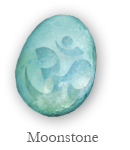

The primordial sound from which the entire universe emanates; the Supreme Self in the form of sound. AUM is the essence of all mantras. AUM is the unstruck sound arising from the heart center (anahata chakra) of every being.


Right action; that which supports and upholds. One’s dharma is one’s role or duty in life.
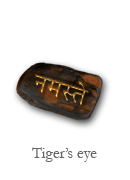

A greeting of respect in India. Namaste means, “I honor the divine light within you.” The salutation is made with the hands gently pressed together in front of the chest, palms touching, fingers pointing toward the sky. It is accompanied by a slight bow of the head to indicate respect.
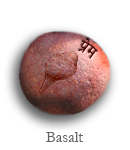

Love. Prema also refers to divine love; love for God.


Selfless service; work done without attachment to the fruits of one’s actions. On the Siddha Yoga path, service to the Guru is one of the main practices. Seva is performed without desire for personal gain. When a devotee performs seva, they experience personal transformation. Additionally, through the knowledge they gain by offering seva, they are able to uplift the world around them.
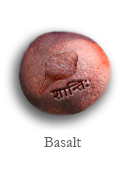

Peace, tranquility, harmony, equipoise, serenity, stillness. In the Vedas, the ancient Indian scriptures, the hymns often conclude with the words Om Shantih Shantih Shantih. The word shantih repeated three times confers the blessing of protection from the three afflictions: adhyatmika, suffering caused by the body and the mind; adhibhautika, suffering caused by nature and by other living beings; adhidaivika, suffering caused by supernatural forces.


The term shri encompasses the qualities of auspiciousness, splendor, sacredness, majesty, beauty, abundance, nobility, dignity, and good fortune. Shri is used as a form of address or as part of a title. Shri is also one of the names of the goddess Lakshmi. Shri is written or recited to invoke the divine power, the Sanskrit term for which is divya shakti.

English, Spanish, Hindi, and Sanskrit Words
BABA (Hindi)
A term of endearment and respect, expressing great sweetness and
love.
Swami Muktananda was addressed as Baba by his disciples.
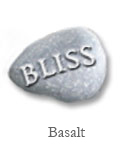
BLISS
Unconditional happiness; an intrinsic quality of all creation. On the Siddha Yoga path, the practice of chanting is known for giving rise to spontaneous bliss.

COMPASSION
The experience of connectedness with sentient beings and insentient objects, manifested through loving and altruistic actions.

CONTENTMENT
An inner state of well-being; freedom from any sense of lack. Contentment is cultivated by making the effort to live responsibly, in accordance with dharma.

DELIGHT
Zestful relishing that transports one to a state of enchantment.

DEVOTION
The light of pure love emanating from the cave of the heart.

DISCIPLINE
The steady and committed practice of taking small steps to achieve great goals.
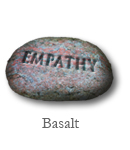
EMPATHY
Resonating with another’s situation; understanding what is happening with them in their life and, if need be, offering tangible support.

GRACE
The benevolent power of God flowing eternally throughout the
universe; anugraha shakti. The Guru
is the embodiment of this power of grace, revealing the presence of God in the world. The supreme act of
Guru’s grace is shaktipat diksha, the awakening of Kundalini Shakti, spiritual energy, within a
seeker. This act of grace ignites the flame of Self-knowledge and releases the inborn joy within a seeker’s
heart. God’s grace, the Guru’s grace, and the grace of the inner Self are one:
all-pervasive and ever-present.
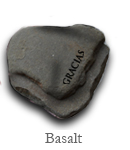
GRACIAS (Spanish)
A word meaning “thank you.” Gracias is a form of the Spanish word gracia, meaning “grace,” divine favor given by God. The root of both words is the Latin word gratia, whose meanings include “gratitude” and “holding someone in esteem.”

GRATITUDE
The experience and expression of genuine thankfulness; a grace-filled attitude. Cultivating gratitude draws divine grace, which in turn increases the experience of gratitude—creating a virtuous cycle.

HOPE
The indefatigable belief in infinite possibility.

JAPA (Sanskrit)
The practice of mantra repetition. Japa is performed inwardly or aloud to purify the mind and to quiet its active tendencies.
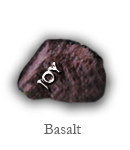
JOY
Exuberance of spirit; an expansive upwelling of felicity.

LEGACY
Deeply-held values, significant traditions, and vital knowledge kept alive and transmitted from one generation to the next. The philosophy and culture of the Siddha Yoga path is a legacy established by the Gurus of the Siddha Yoga lineage. Devotees sustain and contribute to the Siddha Yoga legacy by studying, practicing, assimilating, and implementing the Siddha Yoga teachings.

MANTRA (Sanskrit)
Sacred sounds and syllables that have the power to grant blessings. The mantras of the Siddha Yoga path are chaitanya (enlivened) by the Guru’s grace.

RESOLUTION
A commitment made with the intention to bring about beneficial results.

RESPECT
An abiding recognition of great worth in oneself and in others, which is reflected in one’s thoughts, feelings, and actions.
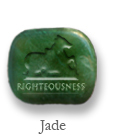
RIGHTEOUSNESS
The fundamental guiding principle for living a life that upholds and is in alignment with the divine and moral order, the dharma of the universe.

SUPPORT
To provide a steady and reliable foundation for oneself and for others in times of both good fortune and challenge.

THANK YOU
A phrase communicating gratitude, appreciation, and acknowledgment. This phrase is so potent that when offered sincerely, it has a profound effect not only on the recipient but on the giver as well.

TOUGH LOVE
The discipline of expressing love with honesty, courage, and patience. The purpose of tough love is to bring about the most positive outcome. In tough love there is no ulterior motive, no falling for excuses. Tough love is free from attachment; it does not give in to short-term satisfactions or petty rewards. Tough love understands the importance of following the path of dharma.

TRUST
A deep, steady state of belief in something. On the Siddha Yoga path, trust is the unwavering assurance of the constant presence of the Guru’s grace, protection, and guidance. Trust is a virtue that must be diligently cultivated and protected.

WISH
The expression that a hope or desire be fulfilled. The tradition of making wishes is timeless and exists in every culture. Making a beneficial wish for oneself and others is a way to express the goodness in one’s heart.

Suffixes (word endings)
 What words come to mind that include these suffixes?
What words come to mind that include these suffixes?
- –ful
- –ness
- –ous
- –sing (In the English language, sing is not a suffix; but for fun,
- it is used as one in Gurumayi's Season's Greetings card.)
Here are examples:
- –ful: beautiful
- –ness: willingness
- –ous: melodious
- –sing: blessing

Symbols

CONCH
The spiraled shell of a conch, a marine gastropod. When the conch is blown, the resonant sound that issues forth is considered to represent the primordial sound AUM. The conch is treasured by many of the Indian deities, including Lord Shiva, Lord Vishnu, Shri Lakshmi, and Shri Durga. Lord Vishnu is always portrayed holding a special conch, the Panchajanya, which represents life as it was first generated from the life-giving waters. Born of the ocean, the conch is frequently associated with water and the moon.
Having the form of multiple spirals, evolving from one point into ever-increasing spheres, the conch denotes eternity. Because of its sonorous sound and sacred properties, the conch is often played at times of worship as an invocation of divinity.

JAPA RING
A ring specially designed for the practice of japa (repetition of the mantra). Worn on one of the fingers of the hand, the japa ring is turned with the thumb, each turn marking one repetition of the mantra.

NANDI (Sanskrit)
The name of the bull that is Lord Shiva’s vehicle. Every deity in the Indian tradition has a vehicle, represented by an animal. Nandi represents dharma (right action) and seva (service). He guards the door of temples dedicated to Lord Shiva. Traditionally, a devotee acknowledges Nandi’s presence before entering the temple for darshan of Lord Shiva.

PEACE SYMBOL
An international icon for peace and freedom. Designed in the 1950s, this symbol has since become an emblem recognized worldwide as representing the collective wish and timeless yearning for a world free from war and strife.
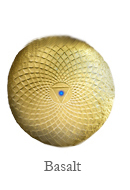
SAHASRARA (Sanskrit)
The seventh spiritual center of the subtle body, located in the crown of the head; the destination of the awakened Kundalini Shakti. Sahasrara literally means “one thousand,” reflecting the sages’ perception of the sahasrara in meditation as a thousand-petaled lotus, radiating light.

SILENCE
The Chinese character meaning “silence.” Chinese characters can reveal deep layers of meaning. The lower left symbol in this ancient character is said to depict the alchemical stove used by ancient Taoists to turn base metal into gold. The left half of the character means “blue,” while the right half is an ancient form of the character for “pure” and “complete.” The lower right corner shows a hand pulling on a stick. Taken as a whole, the character evokes reaching for the inner blue light found in the deepest silence.
In the Siddha Yoga Message for 2002, Abide in Silence, the Message artwork depicts this Chinese character enclosed in a heart.

SMILEY FACE
An expression of lightheartedness. This symbol is an invitation to experience one’s own happiness at any moment and to bring joy to every interaction. The smiley face expresses the fundamental happiness that is present at the core of all manifestation.

TRIPUNDRA (Sanskrit)
Three bhasma stripes. Bhasma is sacred ash from ritual fires known as yajnas, in which Vedic mantras are recited as offerings to Agni Devata, the Lord of Fire. Tripundra symbolizes the three gunas, the three qualities of life. These three qualities are sattva (purity), rajas (activity), and tamas (inertia). Yogis seek to transcend the three gunas for the purpose of attaining divine bliss and liberation. To remember this intention, yogis apply bhasma to their bodies before engaging in spiritual practices, such as meditation or worship.

TURTLE
A representation, in many cultures and ages, of good fortune, strength, patience, endurance, stability, longevity, and Mother Earth.
In Indian mythology, the turtle is said to support the Earth and the sea on its back. The second avatar (divine incarnation) of Lord Vishnu is the giant turtle Kurma, also known as Kurmavatar.
Most temples in India have a statue of a turtle near the entrance. These statues remind devotees entering the temple that, just as the turtle pulls its limbs inside, a seeker must withdraw the senses and look inward to experience God. In the village of Vajreshwari, in Maharashtra, there is an ancient temple dedicated to three forms of the Devi (the Goddess) that stands atop a high hill. As devotees climb the 51 magnificent steps to the entrance of the temple, they are greeted on the landing halfway up by a statue of a turtle.
The turtle depicted in Gurumayi’s Season’s Greetings Card is a baby turtle that was seen sunbathing in the Shree Muktananda Ashram gardens in August 2012.

WARLI FOLK ART
Folk art created by the Warli tribe in Maharashtra State, India, where Gurudev Siddha Peeth, the first Siddha Yoga Ashram, is located. Warli art, which dates back to the tenth century CE, is popular throughout India for its representations of mystical visions, as well as its vivid depictions of daily and celebratory events among the Warli people.

Natural Elements

ALGAE
The plural form of the Latin word alga, meaning “seaweed.” A large group of simple non flowering plants that grow in both fresh and salt water. Algae, like other photosynthesizing plants, manufacture their own food by taking in carbon dioxide and releasing the excess oxygen molecules into the atmosphere. In the balance of nature, algae are beneficial to life on land and water.
The algae shown in the card are from the sacred waters of Lake Nityananda in Shree Muktananda Ashram.

JASMINE FLOWERS
Delicate and beautiful white flowers with an exquisite fragrance. The jasmine flower is associated with selflessness, love, nobility, grace, elegance, and hope. Jasmine oil is famous for its medicinal qualities and its ability to lift one’s spirit.
Jasmine flowers grow in abundance on the grounds of Gurudev Siddha Peeth. Whenever they are in bloom, jasmine flowers are offered during worship in the Bhagavan Nityananda Temple and in Baba Muktananda's Samadhi Shrine.

MELODIOUS SOUNDS OF BIRDS
Listening to the melodious sounds of birds gives one the experience of being close to nature. One reason that people everywhere delight in these sweet sounds is that they have a calming effect on the mind and the heart. The cheerful and welcoming sounds of the birds heard in Gurumayi’s Season’s Greetings Card are from Shree Muktananda Ashram.

RAKTA CHANDAN (Hindi)
Red sandalwood seeds; a symbol of love, good luck, and auspiciousness. The rakta chandan tree also has many medicinal qualities. Originating in India, red sandalwood trees now grow in tropical climates around the world, both in rainforests and in open savannas. These trees are called by different names in various locations. Because of the seeds’ association with good luck, they are sometimes referred to as “red lucky seeds.” The bright red seeds in Gurumayi’s Season’s Greetings Card are from the rakta chandan trees that grow in the gardens of Gurudev Siddha Peeth.

SAND
Fine grains of rock or mineral. Together, millions of grains of sand form a soft and shifting surface. Originating from solid rock, particles of sand are light enough to be transported by wind and water and deposited in different locations, forming beaches and dunes.
The sand that decorates the border of Gurumayi’s Season’s Greetings Card is from the shore of Lake Nityananda at Shree Muktananda Ashram.

STONES
Stones are often regarded as symbols of wisdom and endurance. Over millennia, as stones are exposed to the elements, they are often shaped into new forms, but they continue to retain their essence. Sand is one example of how a stone can be transformed from a hard, durable material into a delicate and malleable one, and still be composed of the same essence.
Many stones also conceal within themselves magnificent gems with healing powers. Gemstones, for example, are formed when a matrix of rock endures tremendous heat and pressure. In this process, impurities are transmuted and radiant crystals emerge.
The stones in Gurumayi’s Season’s Greetings Card include basalt (riverbed stones), as well as many semi-precious gemstones.

WATER
Water is essential to all life; it is valued everywhere for its life-giving properties. It cleanses everything. The sound of moving water has soothing effects on the mind and spirit.
In many cultures, rivers are regarded as sacred. The ritual use of water forms an important part of religious and spiritual initiations and ceremonial traditions.
The gentle water sound that can be heard in Gurumayi’s Season’s Greetings Card is the brook that winds through the woods near the Silent Path on the grounds of Shree Muktananda Ashram. This brook is visited by various forms of wildlife, such as deer, foxes, bears, woodchucks, frogs, hawks, eagles, and other birds.
Every drop of water is precious to this world.

Further Study
Each word, symbol, and natural element in Gurumayi’s Season’s Greetings Card has additional great qualities and symbolic meanings. Make time to research and expand your knowledge of the components of the card. This study will deepen your understanding of the virtues and your appreciation for nature; it will enrich your experience of life.




 AUM or OM
AUM or OM Dharma
Dharma Namaste
Namaste Prema
Prema Seva
Seva Shantih
Shantih Shri, Shree, or Sri
Shri, Shree, or Sri